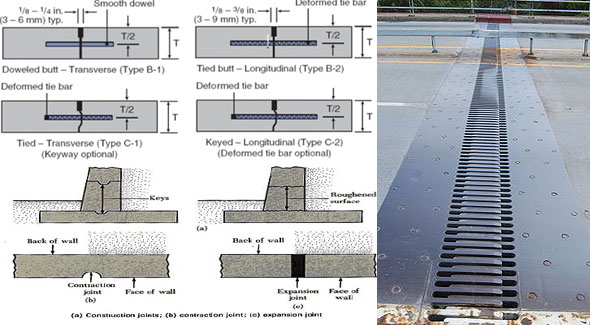Types of Joints in Construction
- Concrete Cost Estimator
- Concrete Continuous Footing
- Landscape Bidding and Estimating
- Construction Cost Estimating
- Concrete and steel cost estimation
- Construction Cost Estimate Breakdown
- Construction Estimating Worksheet
- Home Construction Cost Estimate
- Estimate Pricing Sheet
- Sheet for General Contractor
- Construction Cost Estimate
- Labor Materials Cost Estimator
- Masonry Estimating Sheet
- Sheet for Building Contractor
- Construction Schedule Bar chart
- General Cost Estimator Sheet
- General Construction Estimate
- Building and Road Estimating Sheet
- Detailed expense estimates
- Door and Window Takeoff Sheet
- General Construction Cost Estimating Sheet

In construction, the prime objective of the joints is to add strength for concrete, masonry, plastering.
Most of the construction elements have built up with several materials and they may shrink or expand because of the climatic condition.
The concrete is significantly affected with the weather condition. Several types of joints are utilized to avoid the concrete cracks which may occur by the weather condition.
Types of Joints in Construction - Construction Joints, Expansion Joints, Contraction Joints
Construction Joints: Initially, it is not possible to pour a larger quantity of concrete in a single time. So at that time, a specific portion should be poured as per the recommended shuttering design and the remaining portion will be poured after a certain period.
In that case, the construction joints are utilized to attach the old and fresh concrete and it is also known as cold joints.
Specification of Construction Joints:
a. The existing concrete should contain an irregular surface without dust.
b. A perfect vibration should be provided adjacent to the joint to create the exact bond among the old and new concrete.
c. Once new concrete is poured, the joint surface should cleanse laitance and slurry through a wire brush.
Also Read: Types of joints available in concrete water tank structure
The construction joints are arranged as per IS 11817.
Expansion Joints: The construction materials are developed with several raw materials. The concrete may shrink or broadened because of the weather condition.
Therefore, the expansion joints gap should be arranged to adjust the movement caused by the expansion or shrinkages as well as resist the disfiguration of the structure.
Mostly the expansion joint gaps are arranged in large structure & bridge girder to expand eventual stress. The joint gaps are filled with the expansion material like fibre, bitumen or some other special material.
Specification:
a. Expansion joint should be arranged in the center of each span in bridges.
b. The provision of expansion joints is provided when the length of the structure surpasses 45m.
c. The reinforcements should not be arranged on the expansion joint area.
d. The expansion joint material may vary depending on the structure.
The expansion joints are provided as per IS 3414.
Contraction Joints: The purpose of this type of joints is to resist the cracks caused by shrinkages. The contraction joints are set as a groove where the crack may develop in concrete. When the shrinkage crack occurs in the concrete slab, then the contraction joints stop the cracks from being expanded to the other area.
Specification:
a. The width of the groove should not be under 5mm.
b. The contraction joint depth is 1/4th of the Concrete mean depth.
c. It should be arranged in the weakest zone of the slab.

- Application of concrete calculator
- Roofing Calculator can streamline the roof estimating process
- House construction cost calculator
- Engineering column design excel spreadsheet
- Material Estimating Sheet with Excel
- Materials List and Cost Estimate Worksheet
- Concrete Slab Estimating Calculator Sheet
- Common types of foundations for buildings
- Online calculation of construction materials
- Estimating with Excel for the Small Contractor
- Concrete Beam Design Spreadsheet
- Virtual Construction Management app for construction
- Autodesk’s Project Skyscraper
- Reed Construction’s Reed Insight
- Manage your construction project documentation
- Costimator, the popular cost estimating software
- On Center Software for construction professionals
- Free Construction Estimating Software
- Plumbing Calc Pro
- Cost Estimate Worksheet
- HVAC Piping Quantity Takeoff Worksheet
- Construction Estimating Software Sheet
- Estimate Cost Templates
- Construction Punch List
- Construction cost estimating template consisting estimating basic
- Gantt Chart Template for Excel
- Download Civil Engineering Spreadsheets with Verification
- The Building Advisor Estimating and Budgeting Worksheet
- Spreadsheet for design of concrete bridge
- Construction Estimating Software Free








